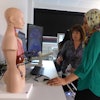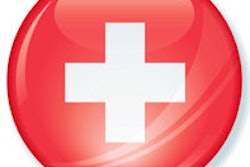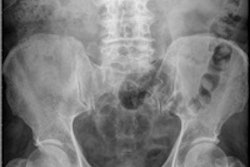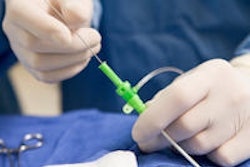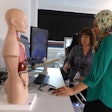
Radiology teaching for medical students requires substantial improvements, particularly when it comes to interventional techniques, according to a survey reported at the 2013 U.K. Radiological Congress (UKRC).
Too little is currently known about junior doctors' level of radiology training and experience, noted Dr. Bhupinder Hoonjan, from the Colchester Hospital University Foundation Trust, U.K., in a poster presentation. To fill this gap, Hoonjan conducted a survey of final-year medical students' attitudes to prior radiology teaching and interpretation, as well as students' knowledge of interventional radiology.
A total of 106 responses were received, representing a response rate of 60%. More than 65% of participants said their radiology learning needs had not been well addressed at medical school. Moreover, during their five years of medical school training, 21% of respondents had reviewed fewer than 10 radiographs and 74.5% had not been on any radiology placements. More than two-thirds of the sample said they would like to see more radiology teaching and/or placements for medical students.
The participants were asked about their confidence in interpreting a scan for common findings. For a chest x-ray, only 14.4% said they were confident about their interpretational skills, whereas the equivalent figures were 27.9% for an abdominal x-ray, 62.5% for an x-ray of a shoulder, 52.9% for an x-ray of a leg, and 66.4% for an x-ray of an ankle.
Nearly 8% of the sample had not even heard of interventional radiology. Of the total, 82.5% did not know interventional radiologists treat postpartum hemorrhages, and more than a third of participants did not realize they treat liver and renal biopsies. Only 73% of students knew interventional radiologists perform angioplasties, while a mere 17% of them were aware radiologists carried out intramuscular injections.
Less than half of the students were unaware interventional radiologists treated severe internal bleeding by embolization. Finally, 62% did not know radiologists used interventional oncology methods to deliver chemotherapy medication to tumors or ablation techniques to tumors.
"Radiology teaching needs to be improved," Hoonjan wrote. "Furthermore, interventional radiology is central to many specialties and medical students must be aware of what services they can provide in order to effectively utilize them."
Demand for radiological investigations is increasing rapidly, and prompt reporting of investigations by radiologists remains a challenge. Therefore, initial interpretation of plain radiographs often tends to be carried out by junior doctors, meaning their initial interpretation guides patient management, concluded Hoonjan.
